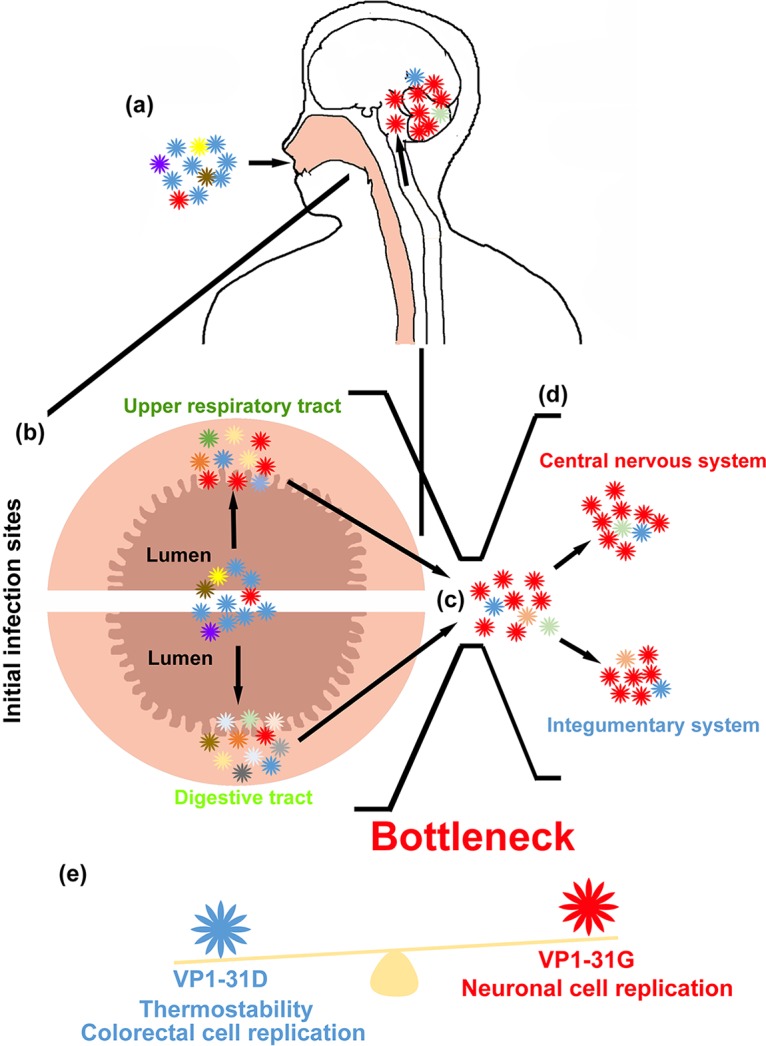FIG 9.

Model of EV-A71 haplotype evolution under bottleneck selection in humans. (a) A broad mutant spectrum of EV-A71, which has major VP1-31D (blue) and minor VP1-31G (red) haplotypes and can infect humans through oral-oral or oral-fecal routes through the respiratory and digestive tract. (b) After entry into the human body, these haplotypes infect epithelial cells in the pharynges (upper respiratory tract) and intestines (digestive tract) and colonize at the initial infection sites. (c) Once the virus colonizes, it next invades other tissues, including the integumentary system and CNS. The mutant spectrum is shaped by a selection bottleneck such as tissue tropism, which changes the haplotype composition in these tissues. (d) The haplotype with VP1-31G becomes dominant in skin, spinal, and brain tissues, which causes HFMD and severe neurological diseases. (e) These evolutionary changes may depend on the effects of the VP1-31 substitution on virus property. The VP1-31D virus showed high thermostability, viral growth, and fitness in colorectal cells, whereas the VP1-31G virus showed better replication fitness in neuronal cells.
